Last Sunday, the shock result of the weekend’s Championship fixtures came courtesy of Wigan Athletic as Paul Cook’s Latics were able to edge out a 1-0 victory over high-flying Nottingham Forest. Jamal Lowe’s first-half goal was the difference between the two sides as Sabri Lamouchi’s Forest struggled to find the gear that had propelled them to second in the table.
This tactical analysis will dissect the tactics Cook used to mastermind the victory and use analysis to show where Forest could have been better to avoid defeat in Greater Manchester.
Lineups

Paul Cook changed little by way of shape for his side following their 1-0 away defeat to Sheffield Wednesday last time out. Wigan stuck with their preferred system so far this season of a 4-2-3-1 – which they have differed from on very few occasions for a 3-4-2-1, which last featured in August during the Latics’ 3-1 away defeat to Queens Park Rangers. In terms of personnel, Cook made three changes. Sam Morsy, Josh Windass and Joe Garner made way for Lewis Macleod, Michael Jacobs and Kieffer Moore; with Windass and Garner dropping to the bench.
Sabri Lamouchi has shown himself to be relatively fluid by way of formation choice during this season. The Frenchman is loyal to four-back formations, however, frequently alters the structure of his midfield and attack. Following Forest’s 1-0 victory over Brentford at the City Ground, Lamouchi dropped the 4-2-3-1 formation in preference of a traditional 4-4-2 against Wigan. Alongside his change in structure, Lamouchi also made five changes in the Reds’ lineup. Chema, Samba Sow, Tiago Silva, Joao Carvalho and Lewis Grabban were all dropped in favour of Tobias Figueredo, John Bostock, Sammy Ameobi, Jack Robinson and Rafa Mir.
Wigan’s speed of attacking wide
From early on in the Championship clash it became clear that, when attacking, Wigan would quickly be playing the ball forwards and predominantly in the wide areas. As this analysis will explain later in the piece, Forest’s set up was susceptible to this, and this was, perhaps, a kink in Lamouchi’s side that Cook had highlighted. When in possession of the ball in defence, the full-backs and even central defenders would look to quickly play a lofted or through pass to the waiting winger to break into the Reds’ half with speed.
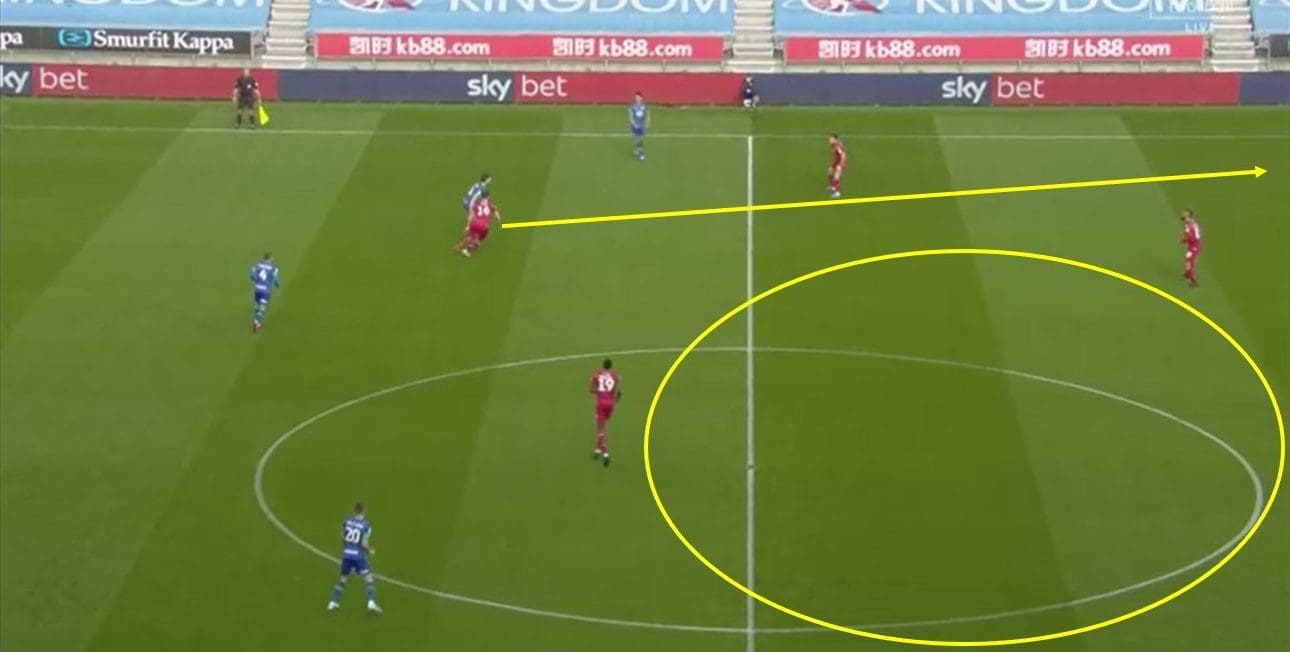
In the above annotation, it can clearly be seen that centre-back Charlie Mulgrew played the ball forwards wide and quickly when in possession. Despite having a large area of space infield to pass into, and only having just received possession of the ball, Mulgrew looks to quickly advance Wigan up the pitch with a through ball. His pass – which is marked by the yellow arrow – pierces between the central midfielder and the high-positioned right-sided midfielder.
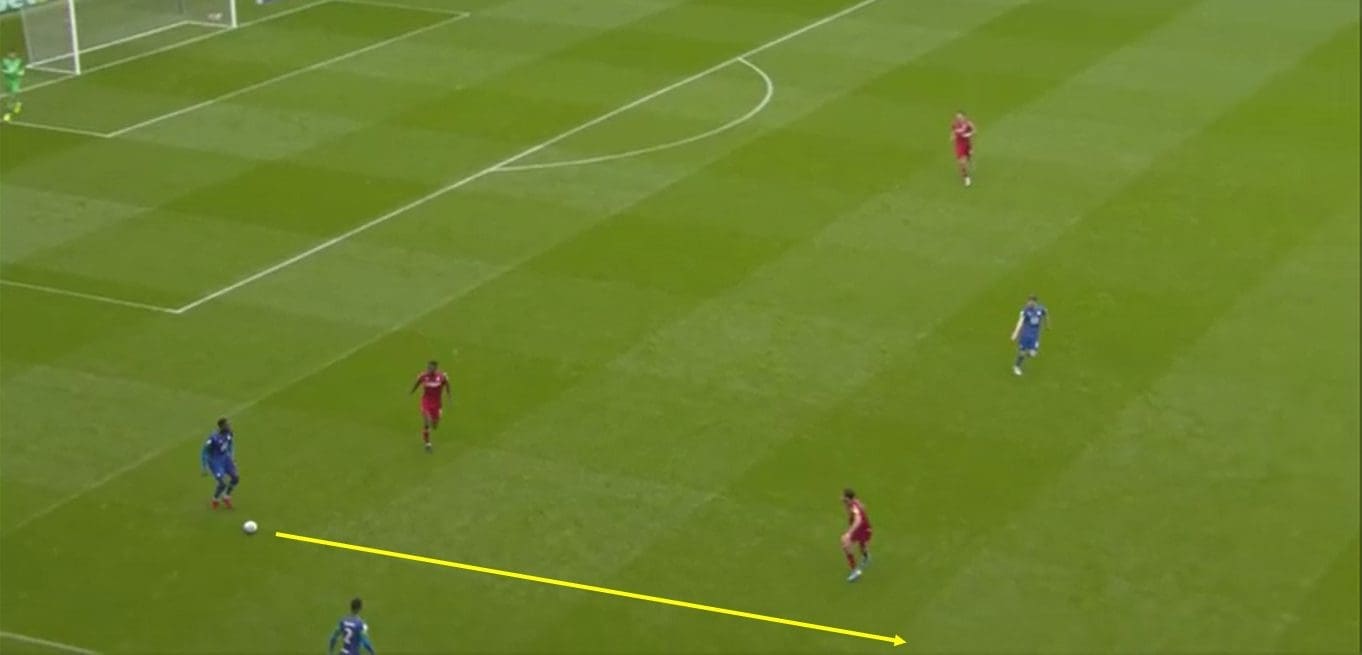
Here, a similar situation can be seen, however, this time on the opposite side of Wigan’s defence. This annotation is taken from the build-up to Lowe’s first-half goal. Again, having just received possession of the ball Wigan’s right-sided central defender, Chey Dunkley, looks to play the ball forward quickly up the line. His pass is marked by the yellow arrow where his lofted ball was played over Forest’s attacking and midfield lines to Gavin Massey waiting in position for the expected pass.
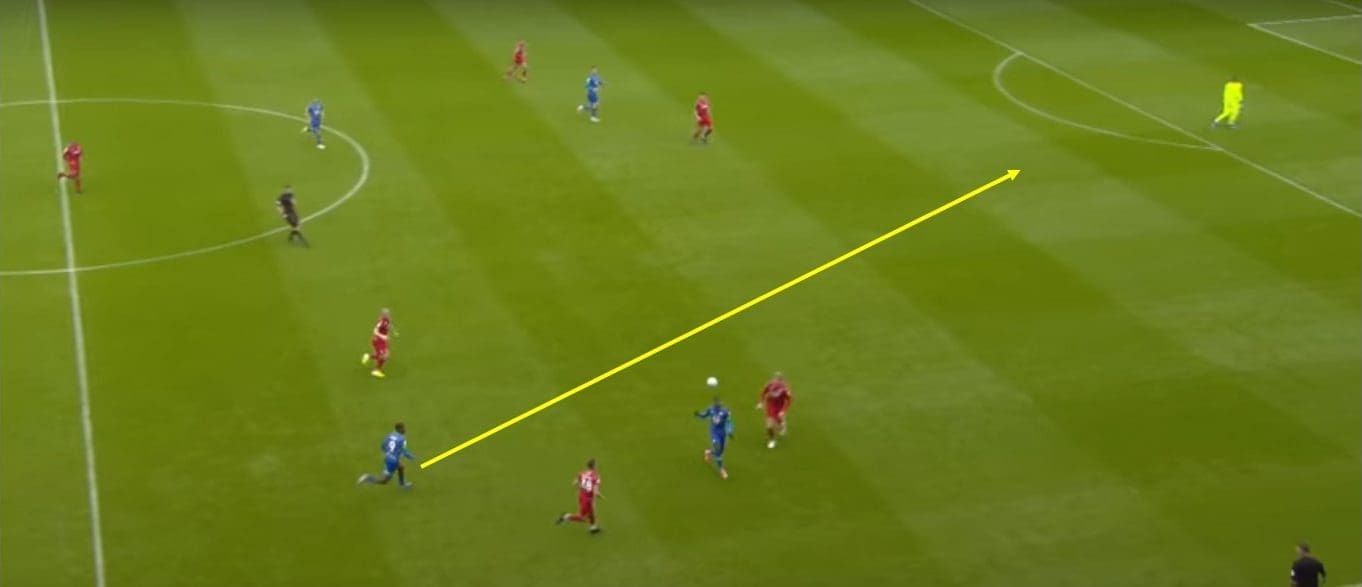
A few seconds later in the same move, with Massey now having received possession of the ball, and due to the pace and width of Wigan’s attack – Forest are in trouble. As the ball has been played forward over the attacking and midfield thirds with Jack Robinson also stationed to high up the pitch, the Reds’ left-sided centre-back has been dragged out of position to challenge Massey. The area of Forest’s defence which Joe Worrall has vacated is now open space for Lowe to charge into – as can be seen in the above annotation. A few seconds following the above screenshot and after a tidy one-two between Massey and Lowe, Lowe has applied the finish to the opening goal of the game with the initial chance arriving due to Wigan’s attacking speed in the wide area.
Forest’s lax pressing in attack
To have been able to find success with attacking quickly in the wide areas, Wigan needed to be afforded time and space when in possession of the ball in defence. That would then allow whichever Wigan defender in possession of the ball to get their head up and spot if the pass down the line was on or not. As can be seen in the below annotation, Lamouchi’s attacking players duly provided that time and space on the ball for Wigan’s defenders to spot their passes.
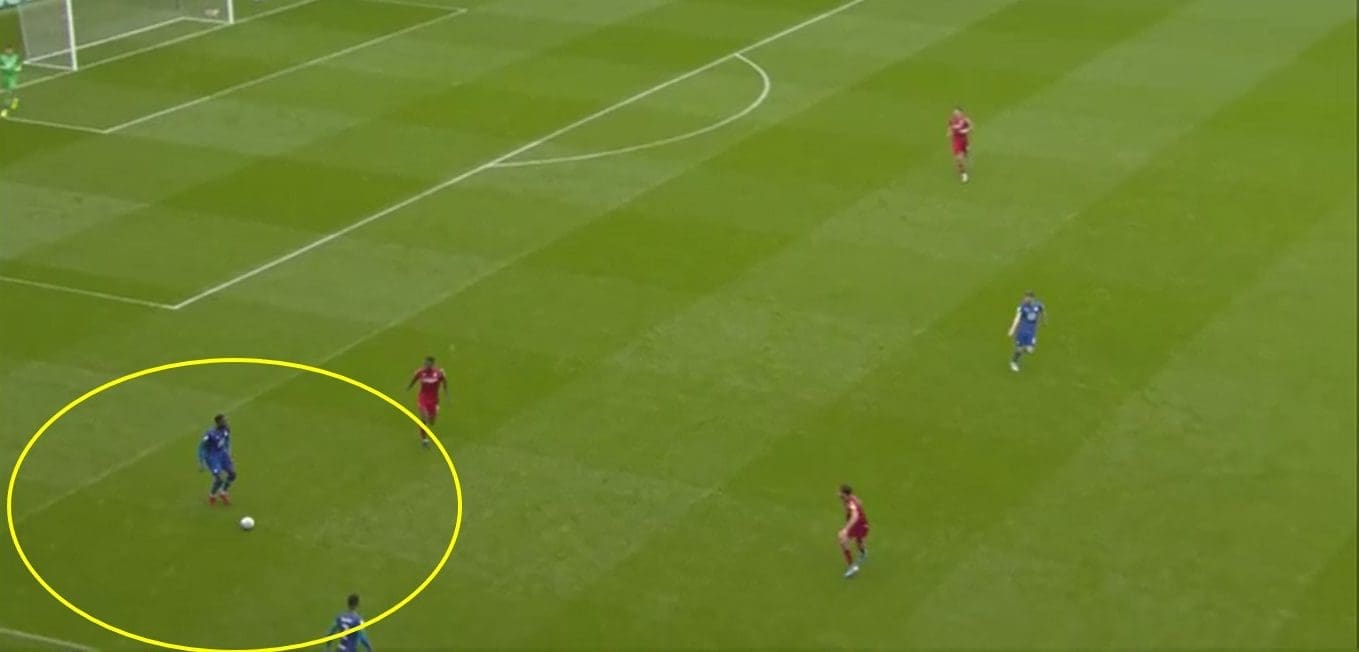
Here, in the same screenshot taken from the build-up to Wigan’s goal, Dunkley’s space on the ball has instead been highlighted. Ameobi can be seen to be attempting to make a recovery run, however, it is too little too late. With a laxed pressing in Wigan’s third of the pitch that was noticeable throughout the game – Dunkley has been allowed to play the pass which ultimately led to the Latics’ winner.
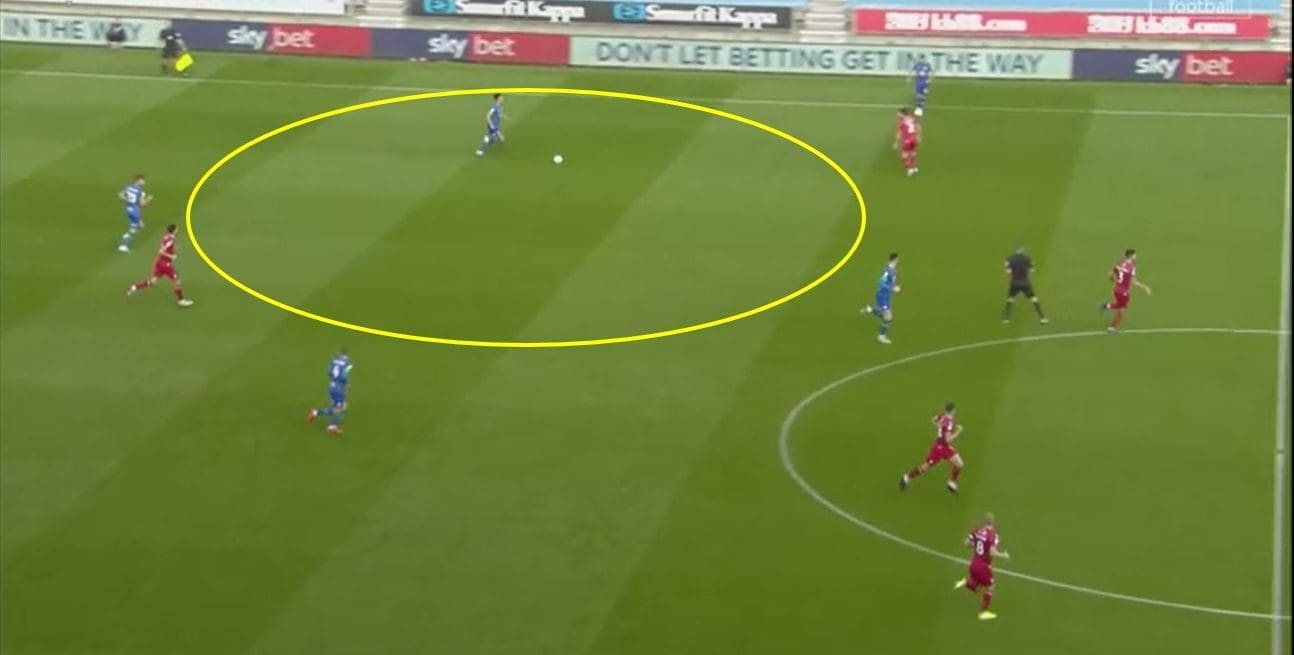
Here is an example from the opening five minutes of the game, thus highlighting that Forest’s lack of pressure on Wigan’s defensive line was not through tiredness but instead tactical. It is very often considered that attackers are a side’s first line of defence and it was evident in this fixture that had the Reds’ attacking players pressed more aggressively Wigan’s goal may have been avoidable.
Wigan’s counter-press
In almost stark contrast to that of Nottingham Forest’s press, Wigan were a model of energetic and heavy counter-pressing. The method behind a counter-press is simple – to win the ball back after losing it as quickly as possible via a tackle, interception or forcing a mistake from the opposition which turns possession back over. Another important element of a heavy press alongside energy is the ability to work in groups or pairs, as a heavy press is much more easily played around when disjointed.
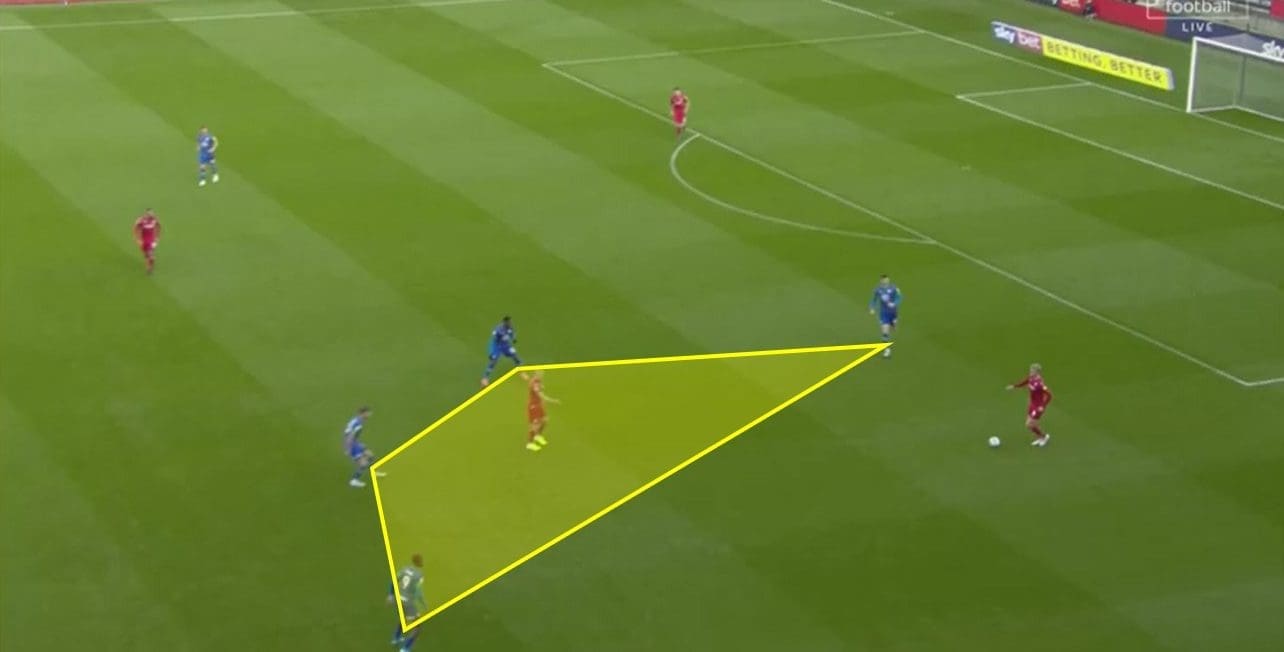
Here, the shape of Wigan’s press when attempting to pen the man in possession of the ball in Forest’s third has been highlighted. Collectively, the four pressing players apply pressure to Worrall. In one movement they cut his passing lines and apply pressure to him. With Worrall unable to spot a safe direct pass due to the press, he is forced to play long, and Wigan recover possession of the ball – which is in no small part due to their heavy press.
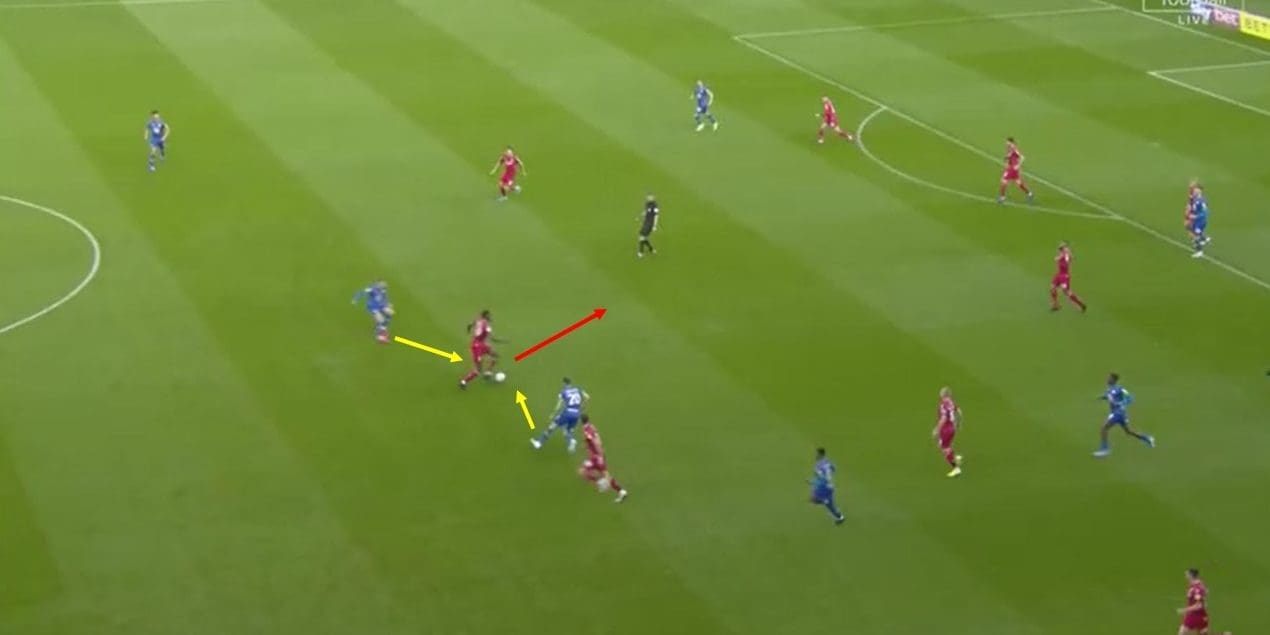
Wigan continued this pressure all over the pitch and often worked collectively when pressing to win back possession. Here, two of Wigan’s midfielders apply pressure to both sides of Ameobi – who has dropped deep to support teammates – and due to the pressure applied he is forced back towards his own goal. Having been forced backwards, Wigan’s defence and midfield can regain their shape while the attackers then put their press into process – showing how the press can work in unison.

As can be seen from Forest’s passing lines, it is evident how Wigan’s press worked to restrict the Reds’ movement of the ball. As the passing lines in the centre of the pitch show, due to Wigan’s press, Lamouchi’s side were forced into central areas of the pitch where they were only able to play short-range passes. Then, if the Nottinghamshire club would attempt to advance quickly, they had to play long, which led to a greater number of mistakes and the Latics being able to reclaim possession much more easily.
Forest’s high and wide wingers
When in possession of the ball the Reds’ 4-4-2 looked more like a 4-2-4 as Lamouchi encouraged his wide midfielders to play as high up the pitch as safely possible. The wide midfielders – Joe Lolley and Yuri Ribeiro – often looked in position to be ready to spring into attack with speed, which also led them to shirk some defensive responsibilities and again played into Wigan’s hands. With Lolley and Ribeiro advanced further than the middle two, it was easier for Wigan’s defenders to play their quick through balls into the wide areas.
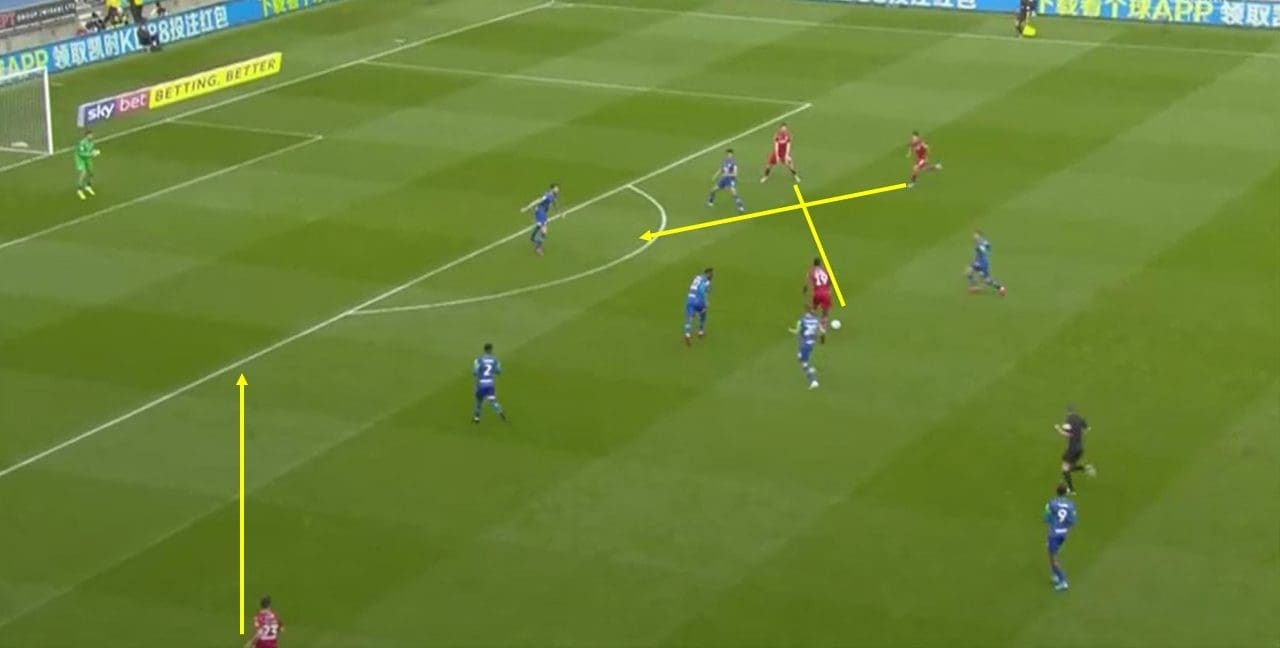
As can be seen in the above annotation when Forest were on the attack in the first half, the two strikers and two wide midfielders would become more like an advanced four. Often, Mir and Ameobi would provide the support for one another where needed, while Lolley and Ribeiro would drive inside – similarly to inside forwards – to provide further central support to the striking pair.
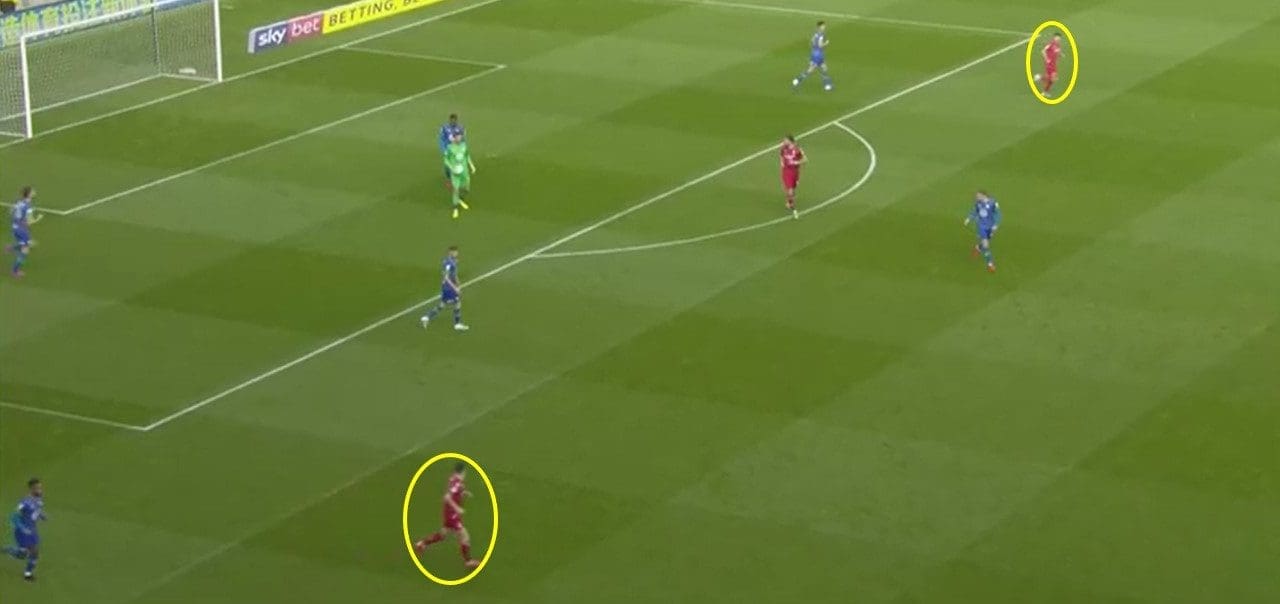
Here, the negative side to having such advanced wide midfielders can be seen. Following a failed attack by Forest Lolley and Ribeiro are caught high up the pitch and needing to make recovery runs. In this instance should Wigan have chosen to attack quickly and in the wide areas – as previously mentioned was their preference – then Wigan’s attack would have been met only by a full-back with no cover from the wing in front of them.
Conclusion
Despite Wigan fairing well so far this season at the DW Stadium, the tie with the Latics will have been viewed as a winnable game for Lamouchi’s side, and the Frenchman – who claimed Championship Manager of the Month for September – will be disappointed to have come away from Greater Manchester with nothing. In Contrast, Paul Cook will be thrilled that he was able to highlight the kinks in the Forest armour and take advantage of those to good effect. While Wigan have struggled away from the DW, as previously mentioned, their home form is fantastic, and it will be vital if the Latics are to achieve anything this season.
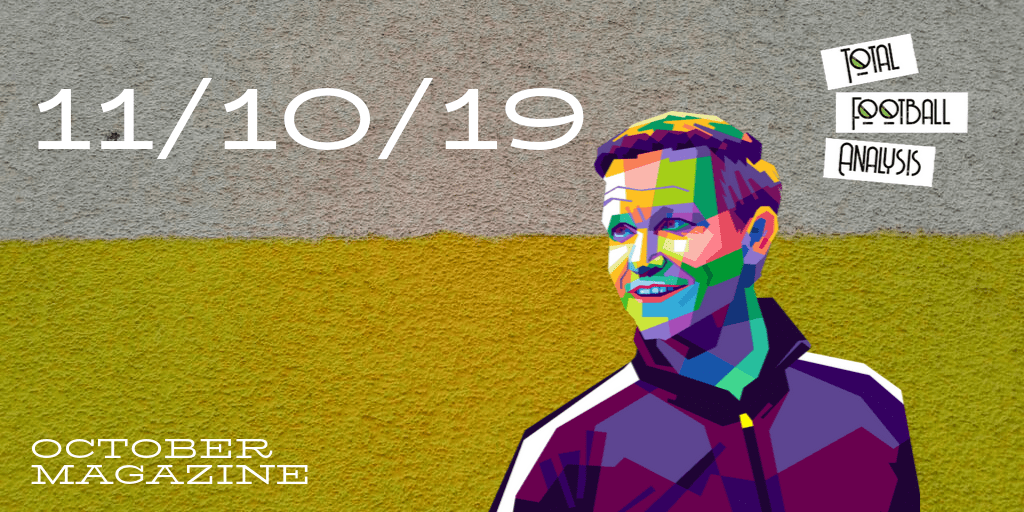
If you love tactical analysis, then you’ll love the digital magazines from totalfootballanalysis.com – a guaranteed 100+ pages of pure tactical analysis covering topics from the Premier League, Serie A, La Liga, Bundesliga and many, many more. Buy your copy of the October issue for just ₤4.99 here





Comments